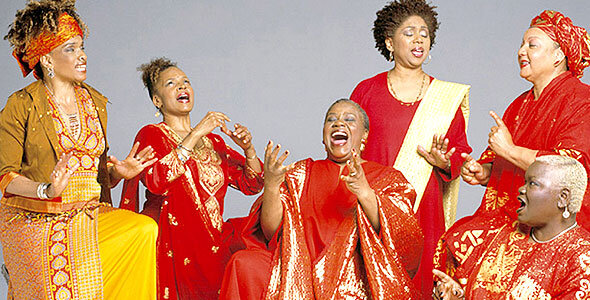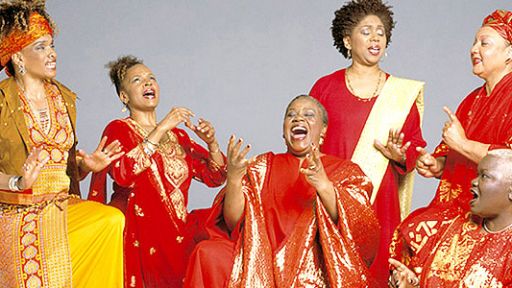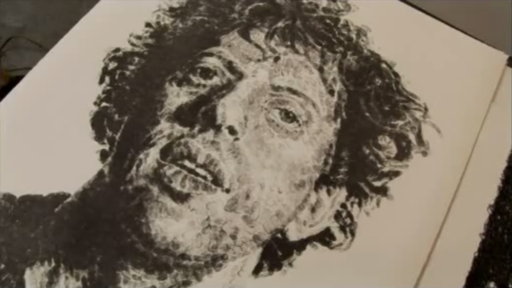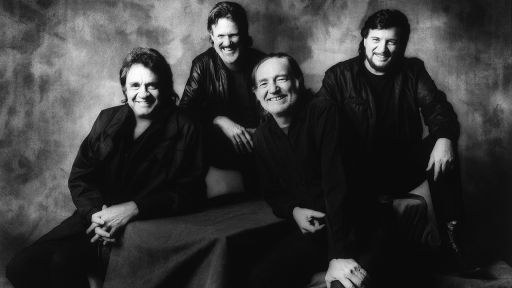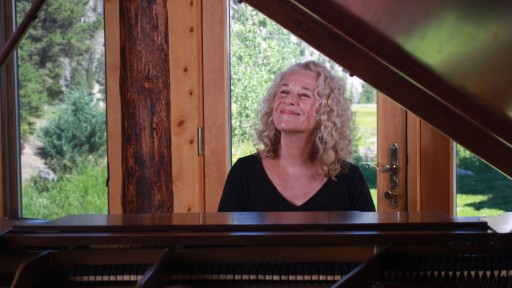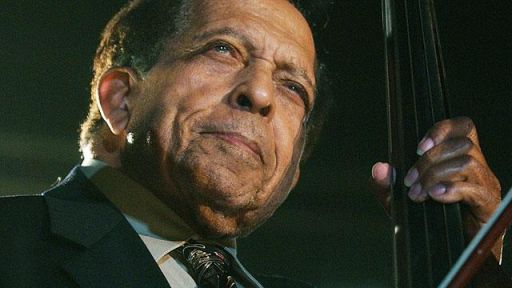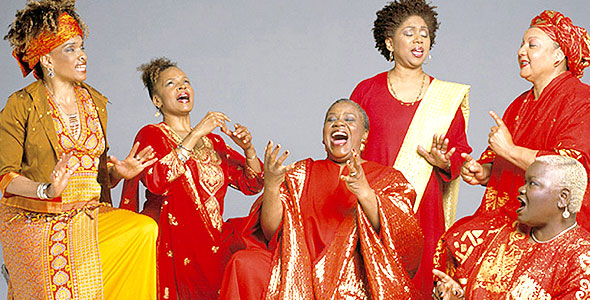
This essay originally appeared as the introduction to a Sweet Honey in the Rock songbook.
INTRODUCTION
On February 28, 1927 in Memphis, Tennessee, the blind sanctified singer Mamie Forehand recorded a refrain based on Psalm 81:16. In this passage of scripture the poet and musician King David advised his people that if they would serve the Lord they would be rewarded by being fed “honey out of the rock,” the place where according to legend of that time, the sweetest nectar was produced. The song became widely popular among Pentecostal, Baptist and Methodist congregations but, as often happens, it underwent a slight textual change on its way to popularity. While Forehand titled her song “Honey In The Rock” and sang those words, random congregations soon added the adjective “sweet” to the title, and the song has come down through history as “Sweet Honey in the Rock.” Forty-six years after Forehand introduced the song, a quintet of African-American women, singing as a unit of the vocal workshop of Washington D.C’s Black Repertory Theater Company, organized an a cappella group and called themselves “Sweet Honey In The Rock.” It would not overstate the case to add the overworked – but definitely applicable – phrase “and the rest is history.”
A female a cappella group was a strange sight and sound in 1973. This in itself seemed strange, for female singing groups have been a part of African-American musical history since the first quarter of the 20th century, when African-American male a cappella groups were organized. But the groups remembered and written about have been the piano-accompanied groups such as The Hyers Sisters, The Ward Singers, The Shirelles and En Vogue. Completely forgotten are the trail blazers, among whom were the powerful Virginia Female Singers, whose 1921 recording of “Lover of the Lord” has recently resurfaced. Little-known facts that have surfaced about this group and others that followed are that they used the voice classification of the male quartets (tenor, bass, etc.) and arranged their own songs. Moreover the bass for the group could compete, without a handicap, with the bass of any of the male groups, including the famous Blue Jay Singers and the Birmingham Jubilee Singers.
Long forgotten are The Southern Harps, organized in New Orleans in 1935 and whose 1942 group was comprised of a lead, swing lead, alternate lead, tenor, baritone and bass. Of particular interest is the fact that the lead was Bessie Griffin, who, in the 1950’s, would emerge as a gospel superstar, while the tenor was Helen Matthews, featured in the 1970’s Broadway musical “Purlie” under the name Linda Hopkins. Their hometown compatriots were the Jackson Singers, organized in 1936, a group that produced a sound not unlike The Southern Harps, with whom they were often paired in concerts. Also forgotten are the Golden Stars of Memphis, organized in 1938, as well as the more famous Songbirds of the South, organized in the same city in 1940. Fortunately one of its members, Cassietta George, made a significant musical contribution as a member of The Caravans.
Indeed the African-American a cappella quartet or quintet was created during the last half of the 19th century, and became a staple of American minstrelsy. It came into modern entertainment in 1905 when Fisk University, realizing it was too costly to send out their large group of Jubilee Singers, dispatched a quartet to replace them. African-American colleges and universities throughout the nation quickly organized similar groups, which inspired a battalion of Jubilee Singers in Birmingham and Bessemer, Alabama, in the second decade of the 20th century. Beginning with the organization of The Foster Singers in 1915, quartets of Jubilee Singers sprang up around the nation. The Fairfield Four were organized in 1921, The Dixie Hummingbirds in 1928, and these groups, in turn, inspired the organization of such secular music groups as The Mills Brothers in 1922, The Ink Spots in 1934 and The Delta Rhythm Boys in 1935. Sweet Honey In The Rock thus joined one of the most prestigious companies of music makers in the history of the United States.
SWEET HONEY IN THE ROCK AND THE AFRICAN-AMERICAN A CAPPELLA SINGING TRADITION
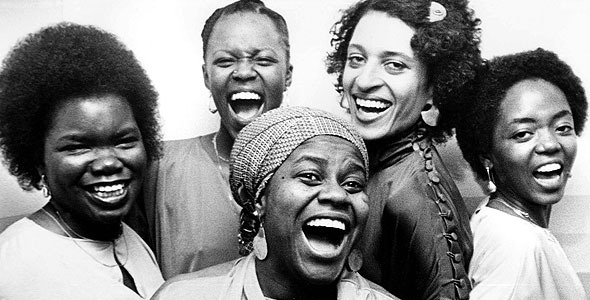
Sweet Honey In The Rock is uniquely distinct from all of these groups. She is even different from Mamie Forehand, though, like Forehand and these groups, she makes melody, harmony, rhythm and message. And therein lies her unique quality: more than any group on the music scene today, “Sweet Honey” as the group is affectionately called – carries a message. Absent from the group’s songs are the moon and June rhymes, the pretty melodies with senseless words and any sign of the slightest fear of topical subjects. In fact, Sweet Honey is known as the group that will go where no other singers will go, textually. At a concert of Sweet Honey, even before they open their mouths to sing, one is struck by the elegant, and yes, beautiful attire of the singers. Clad in colorful dresses of the finest African and eastern fabric, their heads are covered with striking (and intricately wrapped) turbans, or their hair is braided into elaborate designs adorned with ribbons and scarves. The singers grandly – and with a purpose – make their way to a group of chairs assembled in a semi-circle on stage and take their seats. Glancing briefly at each other they burst into sound, a sound unlike any heard in many years. As often as not they accompany themselves on rattles, gourds or sticks. The sound is that of sisters sitting around the fireplace singing songs of social commentary, a female choir in rehearsal, a congregation of Wednesday evening Prayer Services singers, or a village that has come together to sing through happiness, trials or death. Even as the melodies, harmonies and rhythms soar, one is immediately struck by the message of the songs, for the message is what Sweet Honey is all about. In writing about Sweet Honey in Epic Lives – One Hundred Black Women Who Made a Difference (Visible Ink Press, 1993), Jesse Carney Smith notes “despite their name, which comes from a gospel song, Sweet Honey In The Rock’s message is more often political (and social) than religious.” “I think everything is political,” (member Bernice Johnson) Reagon stated in People Magazine. “We are about being accountable.” To be sure, Sweet Honey has become the surrogate conscience of the United States in that her songs will not let us rest while there is still work to be done. Indeed the topics of the songs range from the controversial Joanne Little case to the instructively ceremonial “Seven Principles,” detailing, in English and Swahili, the principles of Kwanzaa. And the message is delivered without hostility or rancor but with the care of a friend and concerned loved one.
As the words of the songs become intense, Sweet Honey accents the meaning through a time-honored African-American practice of standing up and singing. The audiences, more than often, accept this as a sign for them, too, to show their involvement. They, too, stand, clap their hands and sway to the music. Before long the concert has turned into an ecstatic community revival. And clearly Sweet Honey is the leader of the revival. Just as clearly, the group is the Greek chorus, minstrels or community singers of our society, commenting on all matters of importance to the populace.
They are more than just community singers. These women, unlike the jubilee quartets of the 1920s, are not simply singers who, for lack of preparation or want of something else to do, or to make a living and contribution at the same time, fell into a singing group. They are educated (the group contains two members with earned Ph.D. degrees and professional women who have accepted the charge of reminding us that we are all God’s children.) They have taken their songs and message not only throughout the United States and Africa but throughout Mexico, Germany, Australia, Japan, England and Russia, among many nations.
However, their position as community singers is important when it is realized that Sweet Honey almost single-handedly kept the a cappella group tradition alive until 1988 when Take 6 joined them in what is perceived as a revival of the a cappella group. Happily, today there is a plethora of such groups, many of which, both male and female, were inspired to organize by Sweet Honey. In yet another unique move, Sweet Honey includes in her concerts sign-language interpretation for the Deaf and hard of hearing, a practice begun by the group in 1979.
THE MUSICAL STYLES OF SWEET HONEY IN THE ROCK
While there is no doubt the uniqueness of Sweet Honey is the message, her musical sound is what attracts first-time listeners. Described in the magazine High Fidelity as breathtaking excursions into harmony singing and neck-hair raising in Downbeat, one is startled at the many musical guises through which the message may appear. At one time the message comes in the form of a low-down blues; at another it is presented through the 19th century Negro Spiritual; then as the song of a field worker or a chain-gang member; now as a mother singing a sweet lullaby to her child; often as ceremonial African chant with all of its rhythmic/melodic motives that border on becoming a mantra; again as a reggae song steeped in African punctuated rhythms; now as a rousing gospel song with congregational responses; or as a children’s song, with rhythms that crave a ring play.
Regardless of the guise through which the message is presented, the Sweet Honey sound dresses it in splendid attire. In her singing, the four- and five-part harmony sounds as spontaneous as friends meeting on the street corner, though it has the refinement of a conservatory ensemble. The richness of the individual voices and the natural vibrato, huskiness, and agility that they innately possess is a trademark of the group. Placing the high voices in their middle register forces the bass (yes, there are two in the group) to its lower register, creating a sound of substance and body. Like the sweet singing quartets of old, Sweet Honey celebrates close harmony, precise attacks and releases, and understated – yet firm – rhythmic accentuation. At a moment’s notice she can easily change to energetic and extremely intense solo and background singing, a preaching style of delivery, and the exaggerated rhythms of the hard-singing quartets.
The style for which Sweet Honey is most noted is the layered or polyphonic practice reminiscent of West African singing. In this practice the bass sets up a two- or four-bar motif (or ostinato) that not only sets the rhythmic base, but also the harmonic foundation. After several statements of this ostinato, a tenor or baritone enters with a contrasting motif that sets up a dual rhythmic and harmonic progression. On top of this, two other voices, perhaps a tenor and baritone or two tenors, add yet another contrasting motif and together the voices create a sonorous arabesque of harmony and rhythm that is as intricately designed as a tennis match is active. At the moment that the listener thinks she or he has been exposed to all of the material of the song, the lead enters with a soaring melody that, because it is totally different from the sounds already presented, can gallantly ride on top of the harmony and rhythm set up by what has become the response to a call. This practice is so effective because the message of the leader is all the more pronounced as it sits atop a mountain of sound.
Another Sweet Honey device is the folk choral response composed of a single statement presented in perpetual motion behind the soloists. This device, created by the Tidewater Jubilee Quartets, involves setting up a textual or neutral syllable response such as oom-ma-lank-a-lank-a-lank over which the leader/soloist weaves a story. Another favored device is the classic response wherein the background singers repeat the leader’s call, answer questions posed by the lead or complete statements begun by the lead. A favorite example of this device is found in W. Herbert Brewster’s “Old Land Mark” in which the leader begins a statement with ‘let us all go back’ while the response states a diminished repetition, ‘all go back.’ The leader continues the statement with ‘back to the old,’ while the background singers complete the statement with ‘old land mark.’ Acknowledging the ingenuity of Sweet Honey, one can expect endless variations on all of these devices. As if the use of the several devices at their command were not enough to provide variety in sound and technique, each member of Sweet Honey is a soloist in her own right and will lead one or two songs in each concert. This differs from such perennially single-soloist lead groups as The Supremes, where Diana Ross was the lead singer, and Martha and The Vandellas. Sweet Honey works in the tradition of such groups as The Roberta Martin Singers and The Caravans, groups in which each singer was also a soloist.
From the marvelous recorded library of the group – and a fine library it is – and the many articles and reviews written about them – and even articles by members of the group – plus their tours throughout the United States and other parts of the world, we can easily get to know and enjoy Sweet Honey, that is, unless I’m preaching to the choir. Enjoy!

